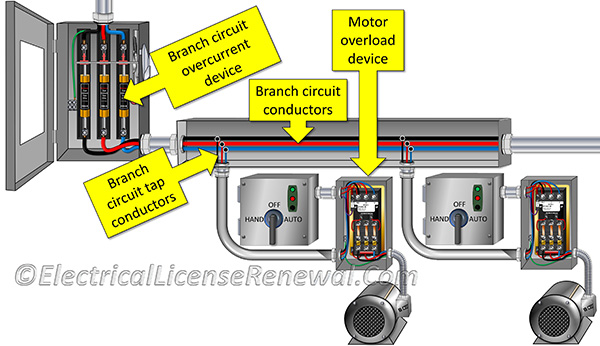430.53(D) Single Motor Taps.

Code Change Summary: Clarifications were made as how a branch circuit tap is measured.
Feeder taps are most commonly used when a smaller conductor is tapped or spliced onto a larger conductor that has an overcurrent device ahead of it, rated more than the tap conductor is rated for. Once in a while a branch circuit tap is used.
In the 2011 NEC®, section 430.53(D) provided rules on how to make a branch circuit tap but failed to mention how the length of the tap conductor was measured. The previous text stated that the conductors “to the motor overload device” could not be more than 25 ft. long.
The revised 2014 code language states that the conductors “from the point of the tap to the motor overload device” cannot be more than 25 ft. long.
This clears up the question about where to begin the tap conductor measurement.
Below is a preview of the NEC®. See the actual NEC® text at NFPA.ORG for the complete code section. Once there, click on the “free access” tab and select the applicable year of NFPA 70 (National Electrical code).
2011 Code Language:
430.53(D) Single Motor Taps.
For group installations described above, the conductors of any tap supplying a single motor shall not be required to have an individual branch-circuit short-circuit and ground-fault protective device, provided they comply with one of the following:
(1) No conductor to the motor shall have an ampacity less than that of the branch-circuit conductors.
(2) No conductor to the motor shall have an ampacity less than one-third that of the branch-circuit conductors, with a minimum in accordance with 430.22, the conductors to the motor overload device being not more than 7.5 m (25 ft) long and being protected from physical damage by being enclosed in an approved raceway or by use of other approved means.
2014 Code Language:
430.53(D) Single Motor Taps.
For group installations described above, the conductors of any tap supplying a single motor shall not be required to have an individual branch-circuit short-circuit and ground-fault protective device, provided they comply with one of the following:
(1) No conductor to the motor shall have an ampacity less than that of the branch-circuit conductors.
(2) No conductor to the motor shall have an ampacity less than one-third that of the branch-circuit conductors, with a minimum in accordance with 430.22. The conductors from the point of the tap to the motor overload device shall be not more than 7.5 m (25 ft) long and be protected from physical damage by being enclosed in an approved raceway or by use of other approved means.